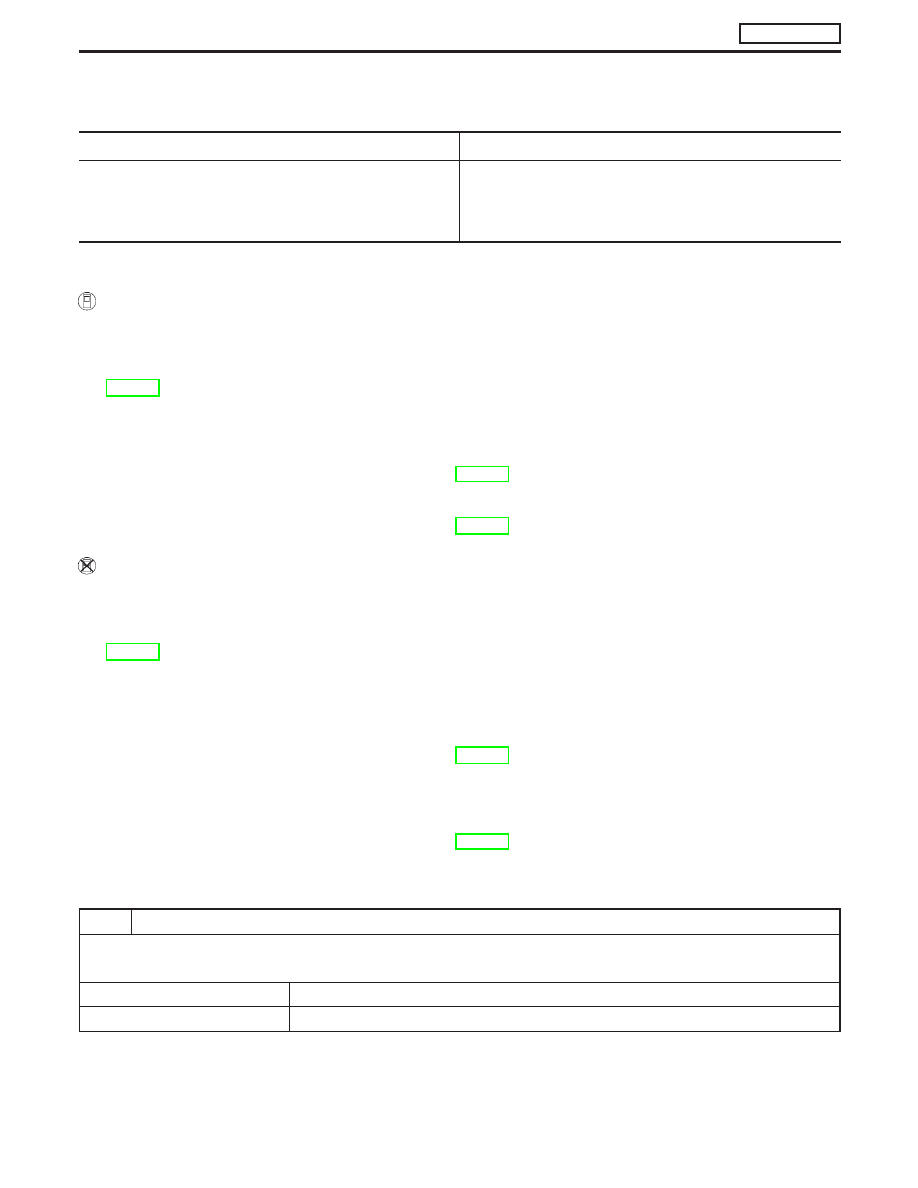Nissan Terrano r20e. Manual - part 129

On Board Diagnosis Logic
The ECM checks if battery voltage is within the tolerance range for the engine control system.
Malfunction is detected when ...
Check Items (Possible Cause)
I
An abnormally high voltage from the battery is sent to ECM.
I
Incorrect jump starting
I
Battery
I
Alternator
I
ECM
DTC Confirmation Procedure
With CONSULT-II
1) Check the following.
I
Jumper cables are connected for jump starting.
I
Battery or alternator has been replaced.
If the result is “Yes” for one item or more, skip the following steps and go to “Diagnostic Procedure”,
EC-153.
2) Check that the positive battery terminal is connected to battery properly. If NG, reconnect it properly.
3) Check that the alternator functions properly. Refer to EL section (“CHARGING SYSTEM”).
4) Turn ignition switch “ON” and select “DATA MONITOR” mode with CONSULT-II.
5) Wait one minute.
6) If DTC is detected, go to “Diagnostic Procedure”, EC-153.
If DTC is not detected, go to next step.
7) Start engine and wait one minute at idle.
8) If DTC is detected, go to “Diagnostic Procedure”, EC-153.
Without CONSULT-II
1) Check the following.
I
Jumper cables are connected for jump starting.
I
Battery or alternator has been replaced.
If the result is “Yes” for one item or more, skip the following steps and go to “Diagnostic Procedure”,
EC-153.
2) Check that the positive battery terminal is connected to battery properly. If NG, reconnect it properly.
3) Check that the alternator functions properly. Refer to EL section (“CHARGING SYSTEM”).
4) Turn ignition switch “ON” and wait one minute.
5) Turn ignition switch “OFF”, wait 5 seconds and then turn “ON”.
6) Perform “Diagnostic Test Mode II (Self-diagnostic result)” with ECM.
7) If DTC is detected, go to “Diagnostic Procedure”, EC-153.
If DTC is not detected, go to next step.
8) Start engine and wait one minute at idle.
9) Turn ignition switch “OFF”, wait 5 seconds and then turn “ON”.
10) Perform “Diagnostic Test Mode II (Self-diagnostic result)” with ECM.
11) If DTC is detected, go to “Diagnostic Procedure”, EC-153.
Diagnostic Procedure
1
INSPECTION START
Are jumper cables connected for the jump starting?
Yes or No
Yes
E
GO TO 3.
No
E
GO TO 2.
DTC 0502 BATTERY VOLTAGE
ZD30DDTi
EC-153